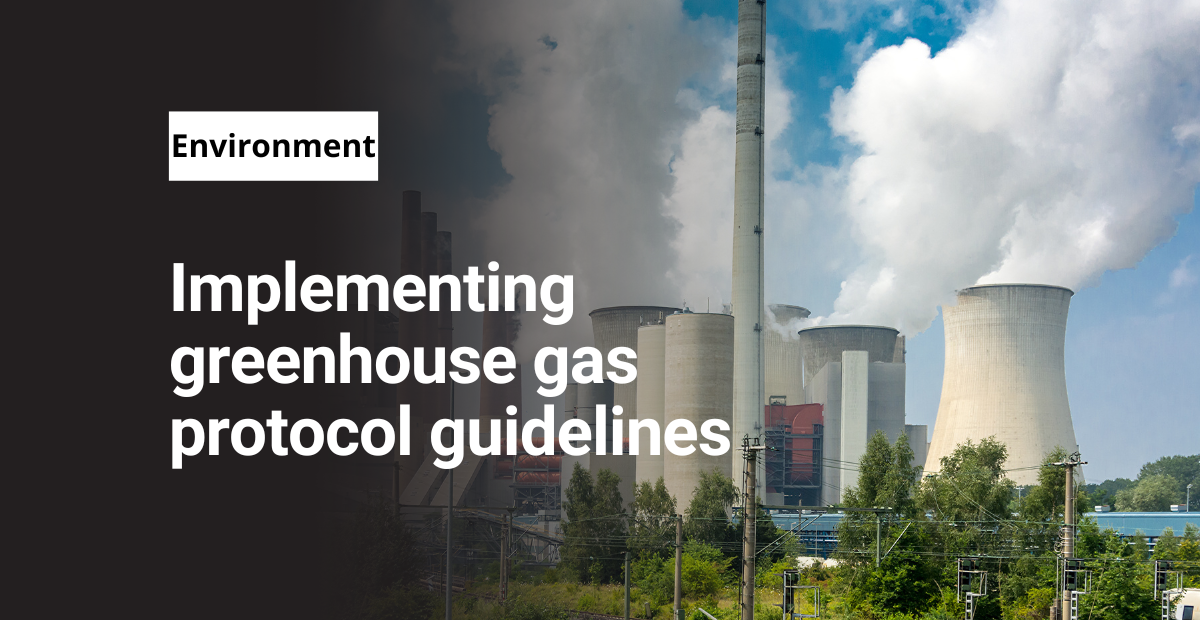The global community has grappled with climate change for decades. Human activities continue to increase greenhouse gas emissions, which remain a major driver of climatic changes. Therefore, many organizations now use the Greenhouse Gas Protocol to track and manage their emissions more effectively.
That’s why the Greenhouse Gas Protocol (GHG Protocol) was developed—to help organizations measure, manage, and report their greenhouse gas emissions. It provides a systematic approach that companies can use to assess their carbon footprint and develop strategies to reduce their emissions in line with the protocol.
In this article, I’ll provide some of my best practices for measuring and reducing your organization’s greenhouse gas emissions according to the guidelines of this key protocol.
Free checklist!
Use this safety audit checklist template as an outline to create your own site-specific version.
Develop an understanding of the greenhouse gas protocol
The first step towards developing a strategy for your site’s emissions is to understand the GHG protocol. Familiarize yourself with the scope of emissions, methodologies for calculation, and the reporting results that align with the greenhouse gas protocol.
The GHG Protocol provides a detailed guide on how to measure emissions from different sources, including:
- Direct emissions from combustion of fossil fuels
- Indirect emissions from purchased electricity
- Emissions from business travel
Before you can get a strategy going, you’ll need to get familiar with these guidelines.
Define your company’s boundaries
Next, you need to define your company’s geographical and organizational boundaries for calculating emissions.
Geographical boundary: All locations where your organization operates, including subsidiaries, joint ventures, and partnerships.
Organizational boundary: All activities that your organization controls or has significant influence on, such as production, transportation, and supply chain, as determined by the protocol.
A clear definition of these boundaries will help you determine the scope of your emissions and which sources your reduction strategy should tackle.
Conduct a greenhouse gas inventory
The third step is to conduct a greenhouse gas inventory. This step requires you to collect data on emissions from all sources within your boundaries, as outlined in the Greenhouse Gas Protocol.
In addition, the GHG Protocol gives you a standardized method for calculating emissions for each source. Therefore, you must collect data on emission sources such as:
- Fuel consumption
- Electricity consumption
- Refrigerant leaks
- Waste disposal
From this data, you should be able to identify the main emission sources at your facility and to prioritize areas for reducing emissions.
Set reduction targets for greenhouse gas protocol
Once you complete a greenhouse gas inventory, set reduction targets. Moreover, base these targets on the guidelines in the Greenhouse Gas Protocol to ensure accuracy and alignment with best practices.
You can set absolute emissions reduction targets or intensity-based targets. Absolute targets aim for a specific reduction in emissions, while intensity-based targets aim for a reduction in emissions per unit of output or activity.
Reduction targets should be time-bound and aligned with the Paris Agreement’s goal of limiting global warming to below 2 degrees Celsius. Therefore, when you set reduction targets, you give your strategy a clear direction and create a way to measure progress toward your goals.
Develop a reduction strategy
With reduction targets in place, you can develop a reduction strategy. Make sure this strategy not only addresses sources of emissions but also complies with the greenhouse gas protocol.
Your reduction strategy should include a mix of measures such as:
- Energy efficiency
- Renewable energy
- Fuel switching
- Process optimization
Prioritize activities that have the greatest potential to reduce emissions and align with your organization’s goals and values. Over time, your strategy will help you achieve your reduction targets while driving operational efficiency.
Implement the reduction strategy
Implementation should be systematic and involve all stakeholders within your organization. You should create a roadmap and allocate resources to support the implementation.
Consider engaging external stakeholders such as suppliers and customers to support your reduction strategy. Also, make sure to monitor and evaluate your progress regularly, in accordance with the greenhouse gas protocol, and make adjustments if necessary.
Report on greenhouse gas emissions
Finally, it’s important to report on your organization’s greenhouse gas emissions. Your reports should be consistent with the greenhouse gas protocol guidelines and meet the requirements of relevant reporting standards (e.g., ISO 14064 and the Carbon Disclosure Project).
Reporting gives transparency on your organization’s emissions and reduction efforts. As a result, it enhances your reputation and supports stakeholder engagement.





